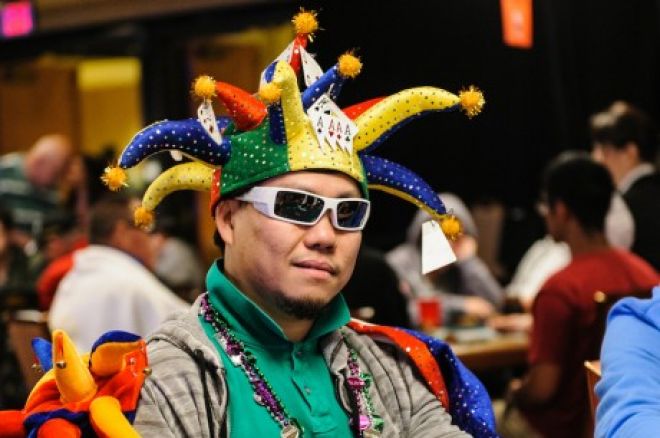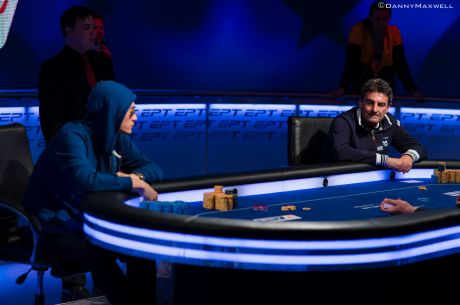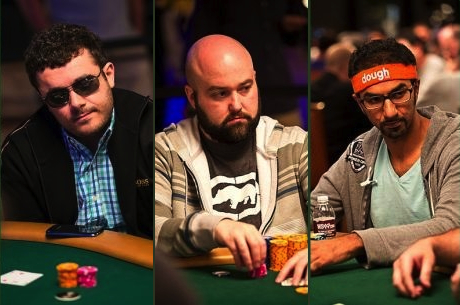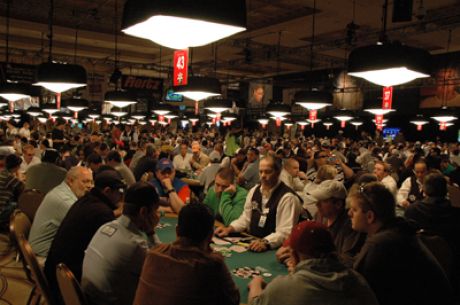Weighing My Options on a World Series of Poker Bubble

A few years ago I was playing a $1,500 no-limit hold��em event at the World Series of Poker. I only play tournaments occasionally and the buy-in was significant for me, which made things all the more intense as we made Day 2 and the money bubble neared.
It was just the third or fourth hand of Day 2, I recall, and I was dealt 10x10x in middle position. There were roughly 300 players left �� 297 would earn a minimum cash of $2,757 �� and I could see tournament directors scrambling around the room, signaling that hand-for-hand play was imminent.
After having being punished by pro Ashton Griffin during the final levels of Day 1, I was only able to bag 19,300 chips, leaving me with 16 big blinds as the vaunted bubble approached. After paying the small blind and a few hands�� worth of antes, I was down to 15 big blinds.
Before I looked down at my wired pair, Kennii Nguyen, a regular on the tournament circuit who tends to dress like a court jester (see photo), miniminum-raised to 2,400 in early position. Nguyen started the day with 47,000 chips, and after picking off a bluff from the table chip leader, he was well over 50,000. He tends to be active, but not overly aggressive.
The action folded to me in middle position, and that��s when I looked down at the fifth-best pair in hold��em.
If this weren��t the bubble of a WSOP event with a buy-in that is too large for my bankroll, I would��ve most likely moved all in. Nguyen is folding a lot of hands to a shove, I dominate his middling pairs, and on the off chance he calls, I am either flipping or dominated. I believe I am a favorite against his perceived range.
However, there were more implications to this decision for me.
As I mentioned, the $1,500 buy-in mattered to me. I had sold pieces of myself to friends, but I still had roughly half of my own action. Likewise, as silly as it sounds, adding a second WSOP cash to my Hendon Mob profile was also meaningful.
Obviously my main goal in the tournament was to try to capture the gold bracelet and the $661,022 first-place prize that eventually went to Tomas Junek. But I also understood that even if I doubled up in that hand, I wasn��t guaranteed to make a deep run with a 35-big blind stack.
Having covered dozens of $1,500 bracelet events, I knew that the pay structure was extremely flat for the first 100 or so players who bust in the money. Looking back now at the payouts, the difference between 297th-place money and 136th-place money in this event was a mere $945. That��s a little more than a third of the difference between what 297th place earned ($2,757) and what 298th place got ($0). Additionally, I also knew that the bubble would burst very quickly once hand-for-hand play began, because there were dozens of stacks shorter than me, including two at my own table.
Weighing all of these options, I folded. Nguyen received a caller from the blinds, and eventually won a small pot with AxQx for just ace-high.
A few hands later the bubble burst, and I had collected that second career WSOP cash. I ultimately exited in 187th place when I moved all in on the button for around 10 big blinds with A?7?. Randolph Lanosga, who eventually finished 18th, woke up with AxKx and sent me packing.
There are numerous factors that go into making a decision in a poker tournament, especially when the event and/or buy-in is meaningful to you. This doesn��t mean that you should open yourself up to large leaks or playing hands badly �� I would��ve definitely moved all in with aces, kings, queens, and ace-king in that spot. Rather you should weigh all of your options so that you can be confident with the choices you make.
Even though I would��ve most likely received a double-up had I shoved over Nguyen��s open, I am happy with the decision I made �� and, more importantly, why I made it.
Get all the latest PokerNews updates on your social media outlets. Follow us on Twitter and find us on both Facebook and Google+!








